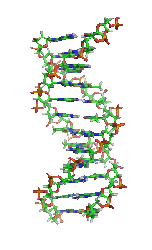By Kim Ribbink, Studio One Networks
Stem cell research often conjures images of political firestorms and futuristic science, yet it's a field that's already offering hope for humans and dogs alike. While the ideal of fixing spinal injuries and curing disease may be a long way off, dogs treated with stem cells are enjoying a new lease on life.
Pepper, a 10-year-old standard poodle, is a case in point. Crippled with arthritis in both his hips, Pepper came to James Gaynor, DVM, M.S., medical director of Animal Anesthesia & Pain Management Center in Colorado Springs, Colo., with his owners, who fully expected to have to put their pet to sleep. Conventional treatments hadn't worked, or had made their dog even sicker. In fact, Pepper's owners were so certain nothing could be done that they bought another puppy. "At our 60 day recheck, the owner was hugging me and crying out of happiness because, in her words, we gave her back her dog," Dr. Gaynor says. "The only problem was she now had Pepper and a puppy."
Healthy Bones It wasn't long ago that dogs like Pepper with arthritis had few options beyond conventional anti-inflammatory treatments -- including a variety of non-steroid anti-inflammatory drugs (NSAIDs) such as Metacam, Previcox, Rimadyl and phenylbutazone; steroid medications such as Prednisone; and disease-modifying osteoarthritis drugs (DMOADs) such as Adequan Canine -- that sometimes don't work. Now stem cells are providing an alternative. One California-based company, Vet-Stem, uses stem cells from dogs' own fat to treat animals in pain.
According to Julie Ryan Johnson, DVM, vice president of sales and marketing, studies have shown that fat is very rich with stem cells, making it an ideal source, and one that is nearly free from controversy, given that most of us don't mind having a bit of fat removed. "The way we do this is a veterinarian will send us a sample of the dog's fat," Dr. Ryan Johnson says. "We isolate the stem cells from that and then send the stem cells back to the veterinarian who injects them back into the dog -- for example, into an arthritic hip or elbow."
Once in the dog, the stem cells communicate with other cells in their environment. While it's not known exactly how they work, they do decrease the dog's pain level. "It's provided the veterinarian with another solution for helping these animals that have pain or difficulty moving," Dr. Ryan Johnson says. "Most importantly, for the dog and the dog owner, it offers quality of life."
The Possibilities Richard Vulliet, Ph.D., DVM, professor and director of the Laboratory of Veterinary Cytotherapeutics at UC Davis, says stem cells haven't cured any diseases yet, but researchers are working hard to change that. "I think that stem cells in general will rewrite the medical textbooks in the next 10 to 20 years," Dr. Vulliet says. "They will have an impact on human, canine, feline and equine health and will allow us to treat diseases that we can only dream about at this time."
Tony Kremer, DVM, an Illinois-based veterinary surgeon, says that as research progresses into the origin of diseases, there is hope that stem cell therapy might one day be used to treat diabetes and muscular dystrophy in dogs. "It is hoped that this research can repair or replace diseased organs, severed spinal cords, or brain cells destroyed by Alzheimer's disease in humans and dogs," he says.
Dr. Vulliet works with adult bone marrow stem cells to investigate potential cures for diseases that cause misery for many dogs. Your dog may soon be able to get breakthrough treatment in the following areas:
Go here to read the rest:
Stem Cell Research and Your Dog
